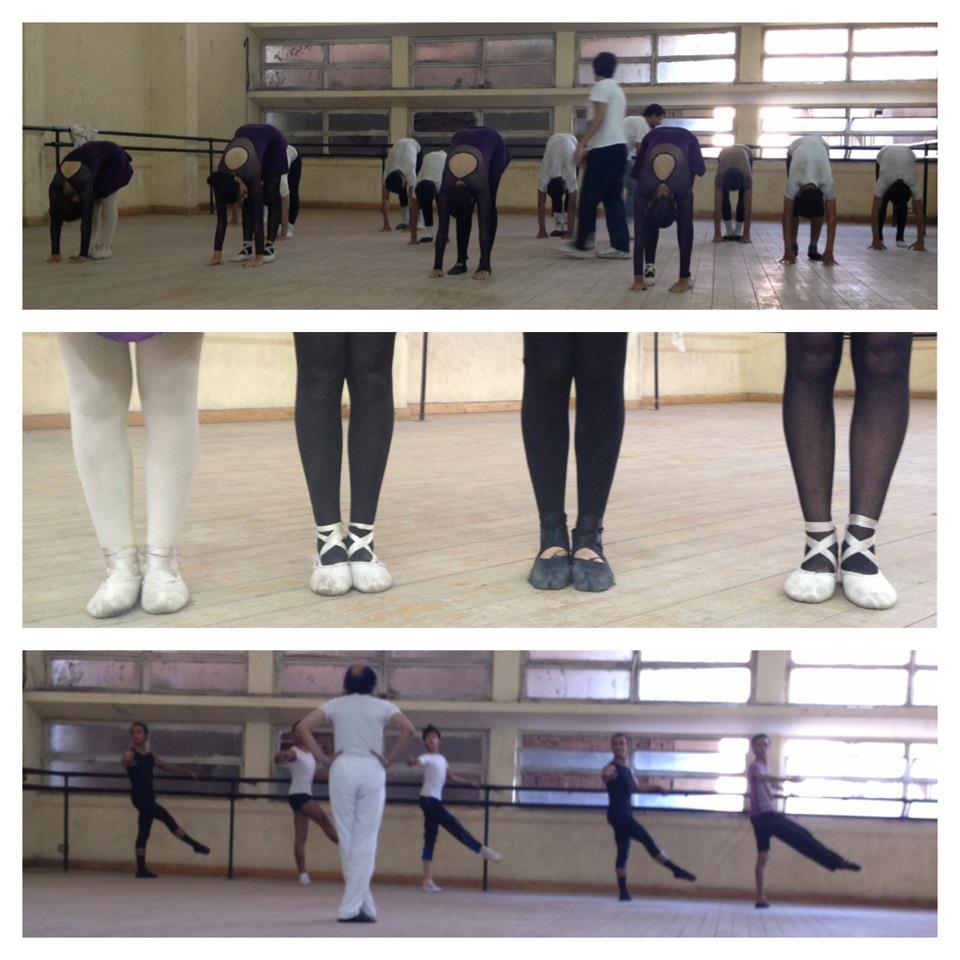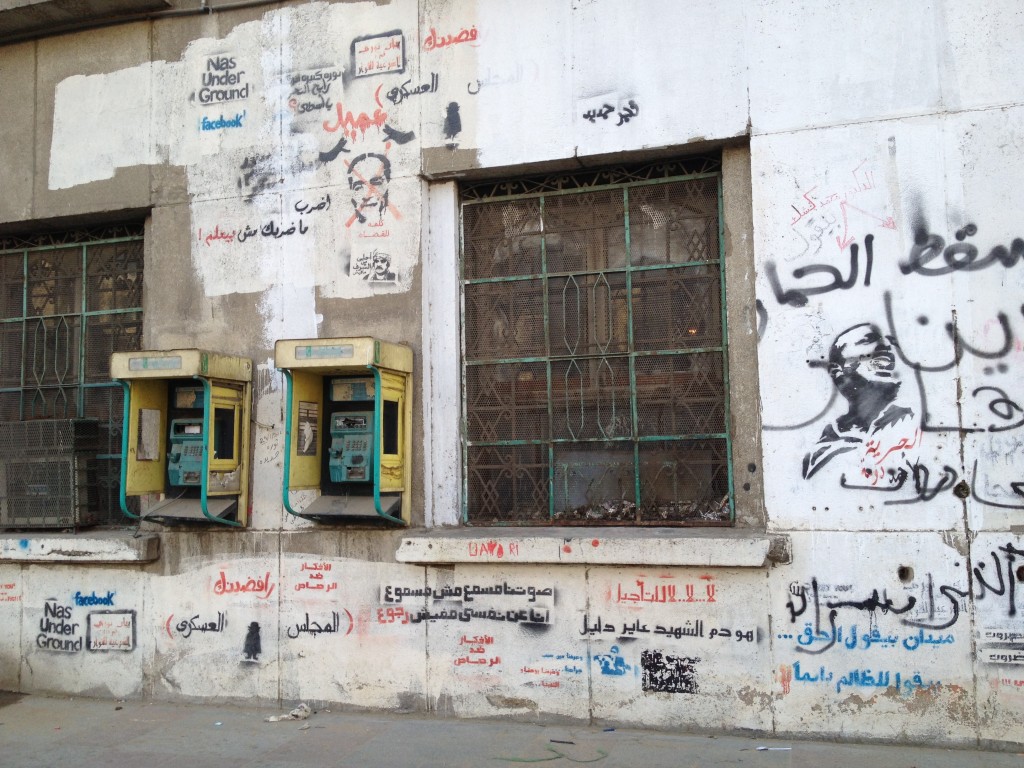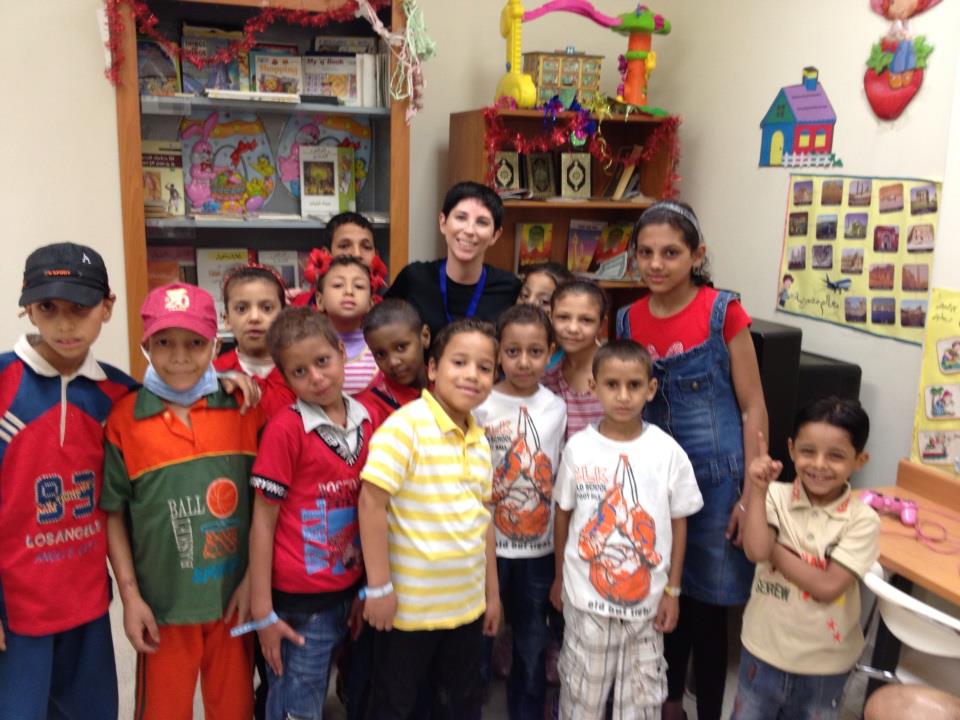As alumni fellows of the UN Alliance of Civilizations International Fellowship program, me and my colleagues have recently made an official declaration that was delivered to the Heads of States and Governments during the 67th General Assembly of the United Nations.
I’m proud to have signed this declaration advocating dialogue of the #TrueMuslimWesternMajority, but understand my ongoing contribution to this dialogue will be less about religion and free speech, and more with dance and cancer.
I went to observe classes at the High Institute of Ballet in Cairo, where I will be co-teaching with grades 7, 8, 9 (ages 14-17) modern dance classes in addition to workshops on community arts with the undergraduates.
The faculty are contemporary dancers with well-established performing credits. Much more so than I. Their teaching methods are also very different than mine. One is laid back, sits back, calls out the warm ups and lets the students go home early. Yet, I understand this was the first class back after two months summer/Ramadan vacation. Another teacher is a man I am going to have to work harder to understand. He smokes during class in the hall, he is extremely hands-on forcing students into stretches and slapping kids alongside the head, and he indulges an elitist approach. But he is an exquisite dancer and cares a lot about his students. So I’ll start with those assets.
All the students are Egyptian, but a few are from Russia here because of the Institute’s deep history and continued connection to the Bolshoi. Most faculty slip between Arabic, Russian, French and English during their instruction. The head ballet master for the boys’ classes is extremely polished and I admire his teaching style. I asked how often he changed-up his barre exercises. He replied, “Oh, it’s not about time. It’s about progress. When I see the results in the students’ technique, either positive or negative, then I change as necessary.”
Yesterday, the two male modern dance teachers sort of challenged me to teach a few minutes. I had the students stand in a circle (rather than the standard lines) so that their would be more equality between the teachers’ pets and the slackers, between boys and girls; so that there would be more self-critique and peer support rather than dictatorial direction; and so that we could see each other’s faces when laughter broke out. Accidentally, my portion of the class went over 8 minutes. It was unclear if any of the students or faculty enjoyed it. Few emotional cues. One female student later requested to add me on Facebook, so there’s that.
In any case, these are dance trainees working every weekday from age 8-20 at this Academy in order to make it into the Cairo Opera Ballet or international companies. And yes, the school has grades with nearly twice as many boys as girls.

After class, I walked around and picked up the few scraps of paper, left-behind ballet slippers, and a used tea cup. I took the tea cup up to the main office and asked where I should put it. The Dean got a bit upset and asked why I was cleaning. “That’s not your job!” He then demanded to know which studio was dirty so that he could have a word with the janitorial staff. I felt awful and explained that I believe everyone should lend a hand, that I enjoy cleaning, that the studio wasn’t very dirty at all, and that it was all ok.
There is definitely a thing here in Egypt about everyone having a job. Yes there is an unbelievable high rate of employment, but almost everyone has “a job to do.” As I was walking home, looking around, it came to me that protest & graffiti tagging is some people’s role here, as is the policing & the painting it over.

Back to the dancing in Cairo.
Today was a very different experience… the first dancing session at Children’s Cancer Hospital 57357 and it went beautifully. As expected, there was a bit of a nervous start but then many children jumped in and started dancing. After we convinced them to turn off the TVs and Play Stations, we found lots of joy.
We boogied, we balanced, we stretched, we sat still, we leapt in the outpatient playroom with different groups of patients awaiting their treatment. The staff offered me the much larger lounge with extra space but that is a peaceful area with sofa chairs where kids are getting their chemo; would feel weird to dance and play in front of them.
Many of the parents took pictures the whole time from the playroom doorway and watched with smiles on their faces. After the session, a woman with full niqab and abaya came up to me and asked my name and where I was from. She held her 1-year old daughter in her ams. Too young to dance with us, the baby girl watched transfixed. She had a lovely, layered pink dress, bald head, gold earrings, cancerous tumor somewhere near her brain, and the biggest smile I’ve come across in quite awhile. Her mother thanked me much more than I deserved. There were plenty of thanks to go around.
The Communications team at the hospital plan to do a feature on the dancing sessions, so I will be sure to share that with you. I’m also excited that some of the older students and faculty at the Ballet Institute are interested in coming to the dance sessions at the hospital.
Beyond just the joy of the patients, what I love about being here is that these parents at 57357 get it. Dance is so important for kids to get to know their bodies, to relate to other children, and to explore the freedom the revolution gave them, no matter what cancerous beast may be inside.
In Egypt, everyone has a job to do. I think this is mine. Well, ours. Me and the kids. Our job is to dance.

***The views and information presented in my blog are my own and do not represent the U.S. Department of State or the Fulbright Scholar Program.